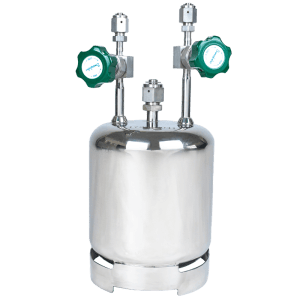In modern materials science and industrial chemistry, few compounds are as versatile and impactful as tetraethoxysilane (TEOS). Also known as tetraethyl orthosilicate, this silicon-based chemical has become a cornerstone in fields ranging from electronics manufacturing to biomedical engineering. Its unique chemical properties make it a highly valued silica precursor, enabling the production of advanced materials, coatings, and functional films.
But what exactly is tetraethoxysilane used for? Why has it become such a vital part of semiconductors, sol-gel processes, ceramics, and adhesives? In this article, we’ll explore the applications, benefits, and future potential of TEOS, helping you understand why it is such an indispensable material in today’s technology-driven world.
What is Tetraethoxysilane (TEOS)?
Tetraethoxysilane is an organosilicon compound with the chemical formula Si(OC₂H₅)₄. It is a clear, colorless liquid with a mild odor and high reactivity. TEOS belongs to the family of alkoxysilanes, which are widely used as raw materials in producing silica-based materials.
When exposed to hydrolysis and condensation reactions, TEOS produces silicon dioxide (SiO₂) — a fundamental material in glass, ceramics, and coatings. This transformation is at the core of its value, as it allows TEOS to serve as a highly effective precursor in sol-gel processing.
Some common characteristics of TEOS include:
-
Low viscosity and easy handling
-
High purity potential for electronic applications
-
Ability to form uniform thin films
-
Compatibility with a wide range of organic and inorganic materials
The Role of TEOS in the Sol-Gel Process
One of the most important uses of tetraethoxysilane is in the sol-gel process, a chemical method used to create solid materials from small molecules. In this process, TEOS undergoes controlled hydrolysis and polycondensation reactions to form silica networks.
Applications of sol-gel-derived silica from TEOS include:
-
Optical coatings for lenses, mirrors, and sensors
-
Protective films for ceramics and glass surfaces
-
Porous silica structures used in catalysis and filtration
-
Nanostructured materials for advanced technology
Because TEOS offers excellent control over the microstructure of the resulting silica, it has become the preferred silica precursor in many high-performance applications.

Major Industrial Uses of Tetraethoxysilane
1. Electronics and Semiconductor Manufacturing
TEOS is widely used in the semiconductor industry due to its ability to form high-purity silica films. These films act as insulators and protective layers in microelectronics.
-
Dielectric layers in integrated circuits
-
Passivation coatings to protect chips
-
Insulating films in transistors and microchips
-
Chemical vapor deposition (CVD) processes
By offering superior film uniformity, TEOS enables the development of more efficient and reliable electronic devices.
2. Adhesives, Sealants, and Coatings
As a silane coupling agent, TEOS plays an essential role in improving adhesion between organic polymers and inorganic materials. This property is critical in industries such as construction, automotive, and aerospace.
Common applications include:
-
Protective coatings for metals and ceramics
-
Adhesive formulations in composite materials
-
Corrosion-resistant layers for harsh environments
-
Glass surface treatments for durability
By enhancing adhesion and durability, TEOS helps extend the life of structural materials while maintaining high performance.
3. Ceramics and Glass Production
TEOS is a vital raw material for producing high-purity silica glass and ceramics. Its contribution ensures better performance in terms of:
-
Thermal resistance
-
Mechanical strength
-
Optical transparency
-
Chemical durability
Applications include quartz glass products, refractory ceramics, and specialty glass used in optics and electronics.
4. Biomedical Applications
TEOS also plays an important role in biomedical engineering due to its ability to form biocompatible silica materials. Researchers and manufacturers use it in:
-
Drug delivery systems, where silica pores allow controlled release
-
Bioactive coatings for implants, improving tissue integration
-
Tissue engineering scaffolds for regenerative medicine
The growing demand for biomedical coatings and nanomedicine has further increased interest in TEOS.
5. Nanotechnology and Advanced Materials
In cutting-edge research, TEOS serves as a precursor for nanostructured silica and hybrid organic-inorganic composites.
Its nanotechnology applications include:
-
Silica nanoparticles for reinforced composites
-
Catalyst supports in chemical industries
-
Hybrid coatings with tailored optical or mechanical properties
These applications highlight the adaptability of TEOS to meet emerging demands in smart materials and functional surfaces.
Advantages of Using Tetraethoxysilane
The popularity of TEOS is not accidental—it offers clear advantages over other precursors and materials.
-
High purity: Produces exceptionally pure silica
-
Film uniformity: Enables consistent thin films
-
Versatility: Works across electronics, coatings, ceramics, and biotech
-
Durability: Enhances product lifespan in harsh environments
-
Scalability: Suitable for both small-scale labs and industrial production
Safety and Handling Considerations
While TEOS is highly useful, it must be handled with care. It is flammable and can release ethanol upon hydrolysis. Proper storage, protective equipment, and ventilation are essential.
Best practices include:
-
Store in tightly sealed containers
-
Keep away from heat or ignition sources
-
Use gloves, goggles, and protective clothing
-
Ensure proper waste disposal procedures
Environmental Impact
With sustainability becoming increasingly important, the environmental profile of TEOS is also being studied. Although TEOS itself is not highly toxic, its hydrolysis byproducts (such as ethanol) can impact the environment if not managed properly.
Ongoing research aims to make TEOS-based sol-gel processes more eco-friendly, reducing solvent usage and improving waste treatment methods.
Future Trends in TEOS Applications
The use of tetraethoxysilane is expected to grow as industries demand higher-performance materials. Key future directions include:
-
Advanced semiconductors for AI and high-speed computing
-
Eco-friendly coatings with improved corrosion resistance
-
Nanomedicine using silica nanoparticles for drug delivery
-
Smart coatings with self-cleaning or anti-fogging properties
Tetraethoxysilane (TEOS) is more than just a chemical—it is a foundation material for today’s and tomorrow’s technologies. From semiconductors to sol-gel coatings, from ceramics to biomedical devices, its applications are both diverse and essential.
With growing demand in electronics, construction, nanotechnology, and healthcare, TEOS will remain at the forefront of material innovation. Understanding its uses allows researchers, engineers, and manufacturers to better harness its potential in developing solutions for a rapidly advancing world.


